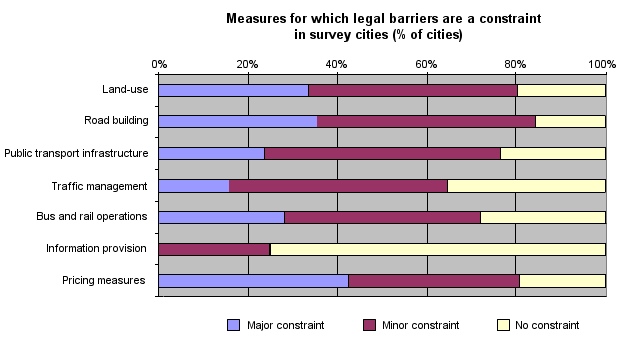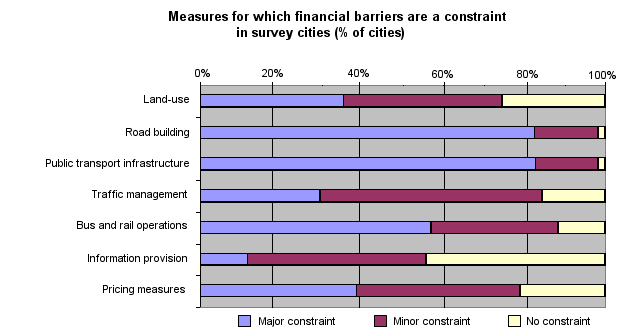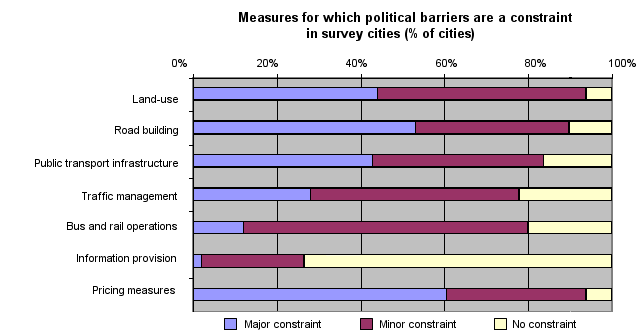| What are the
principal barriers?
In our work in PROSPECTS, we grouped barriers into the four categories
listed below. More recent work in TIPP has demonstrated that failure
to adopt a logical approach to the process of strategy development
can also impose a barrier to effective planning. This Guidebook
is designed to help cities avoid this happening. TIPP also provides
a set of recommendations.
1) Legal and institutional barriers
These include lack of legal powers to implement a particular instrument,
and legal responsibilities which are split between agencies, limiting
the ability of the city authority to implement the affected instrument
(Section 3). The survey of European
cities in PROSPECTS indicates that land-use, road building and pricing
are the policy areas most commonly subject to legal and institutional
constraints. Information measures are substantially less constrained
than other measures.

2) Financial barriers
These include budget restrictions limiting the overall expenditure
on the strategy, financial restrictions on specific instruments,
and limitations on the flexibility with which revenues can be used
to finance the full range of instruments. PROSPECTS found that road
building and public transport infrastructure are the two policy
areas which are most commonly subject to financial constraints,
with 80% of European cities stating that finance was a major barrier.
Information provision is the least affected.

3) Political and cultural barriers
These involve lack of political or public acceptance of an instrument,
restrictions imposed by pressure groups, and cultural attributes,
such as attitudes to enforcement, which influence the effectiveness
of instruments. The surveys in PROSPECTS show that road building
and pricing are the two policy areas which are most commonly subject
to constraints on political acceptability. Public transport operations
and information provision are generally the least affected by acceptability
constraints.

4) Practical and technological barriers
While cities view legal, financial and political barriers as the
most serious which they face in implementing land use and transport
policy instruments, there may also be practical limitations. For
land use and infrastructure these may well include land acquisition.
For management and pricing, enforcement and administration are key
issues. For infrastructure, management and information systems,
engineering design and availability of technology may limit progress.
Generally, lack of key skills and expertise can be a significant
barrier to progress, and is aggravated by the rapid changes in the
types of policy being considered.
|




